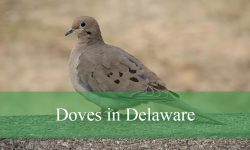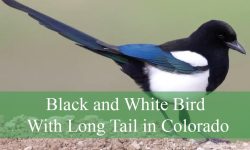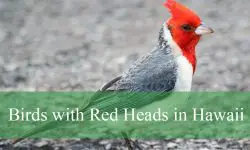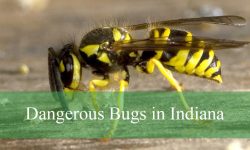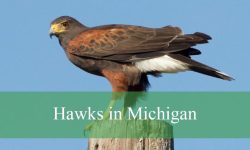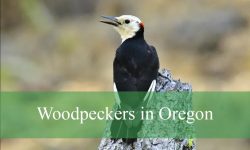Kansas hosts a remarkable variety of hawks that glide across its open skies, from rolling prairies to quiet river valleys. These skilled hunters play an essential role in keeping ecosystems balanced by controlling rodent and small animal populations. Each species adds something unique to the landscape — the powerful Red-tailed Hawk, the graceful Swainson’s Hawk, and the agile Cooper’s Hawk are just a few that capture attention across the state.
The mix of farmlands, woodlands, and grasslands in Kansas creates ideal habitats for both resident and migratory hawks. During spring and fall, large numbers of these raptors can be seen soaring on thermals as they travel across the Great Plains. Their presence highlights the state’s ecological richness and the importance of protecting open spaces where wildlife thrives.
This guide introduces 11 types of hawks found in Kansas, with detailed descriptions, identification traits, and behavioral notes. Each section provides valuable insight into how these birds live, hunt, and adapt to their surroundings, helping bird enthusiasts recognize and appreciate the hawks that define Kansas skies.
Different Types of Hawks Found in Kansas
Red-tailed Hawk (Buteo jamaicensis)
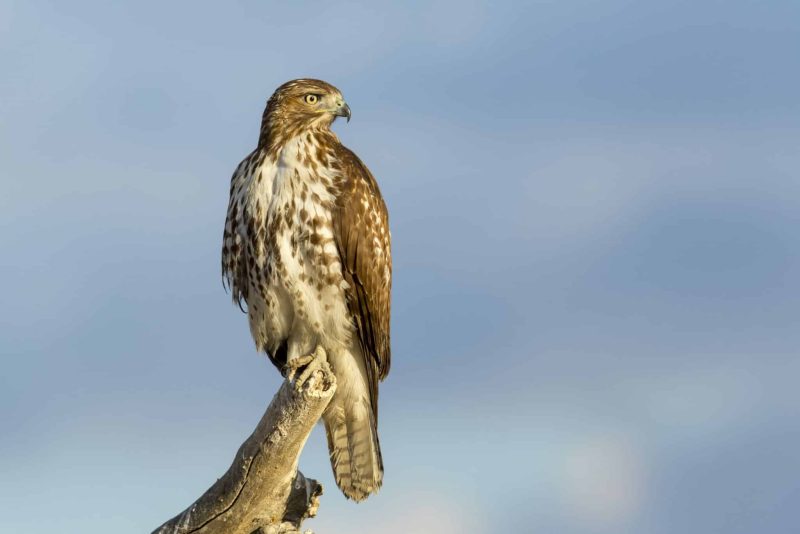
The Red-tailed Hawk is one of the most common and easily recognized raptors in Kansas. This large hawk has a broad, rounded wingspan and a rich, rusty-red tail that gives it its name. Adults typically display a pale underbelly with a dark belly band, while the upperparts are brown with lighter mottling. Juveniles lack the red tail and instead have brown, barred tails until their second year.
These hawks measure about 18 to 26 inches in length with a wingspan reaching up to 56 inches. Females are larger than males, as is typical in raptors. Their strong build and powerful talons make them adept hunters, capable of taking down rodents, rabbits, and even snakes. Red-tailed Hawks are often seen perched on roadside poles or soaring in wide circles above open fields.
Red-tailed Hawks are versatile and adapt to various habitats, from open grasslands and farmland to forest edges and even urban areas. In Kansas, they are year-round residents and can be spotted in nearly every region of the state. Their adaptability and broad diet make them one of the most successful raptors across North America.
They are also known for their iconic, raspy scream — a sound often used in movies to represent any bird of prey. During the breeding season, they build large stick nests high in trees or on cliffs. Both parents share responsibilities in raising their young, who leave the nest after about six weeks of hatching.
Swainson’s Hawk (Buteo swainsoni)
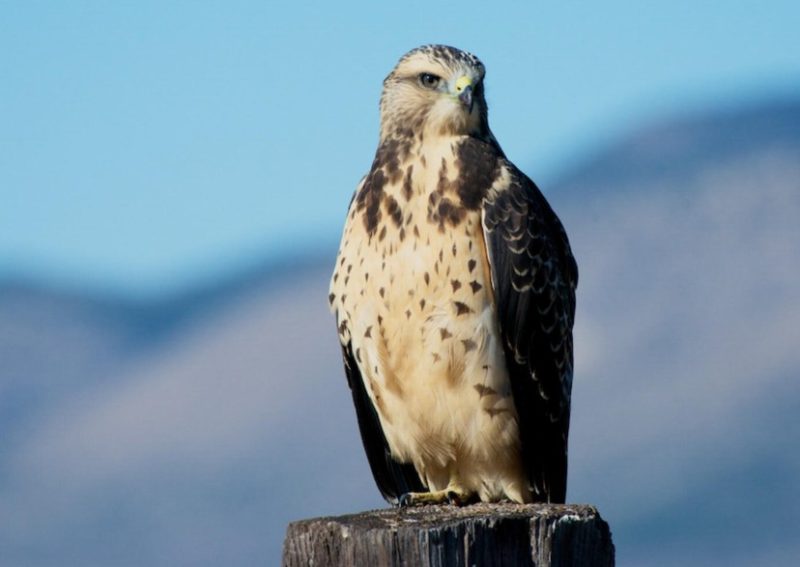
The Swainson’s Hawk is a striking raptor that spends its summers in Kansas before migrating thousands of miles to Argentina for the winter. It is medium to large in size, with long, narrow wings and a slender body built for soaring. Adults often display a contrasting dark bib on the chest and a lighter underside, though coloration can vary widely among individuals.
These hawks measure around 18 to 22 inches long with a wingspan up to 54 inches. Their long wings and pointed tips help them glide effortlessly over open landscapes. Swainson’s Hawks primarily feed on insects during summer, such as grasshoppers and crickets, but they will also hunt small mammals, birds, and reptiles when necessary. They often hunt on the ground or from low perches, especially in open farmland and prairie.
In Kansas, Swainson’s Hawks are most common in the western and central regions where open grasslands dominate. They prefer nesting on isolated trees or utility poles near open areas, which provide both hunting grounds and safety from predators. Their presence peaks from spring through late summer before migration begins.
These hawks are famous for their spectacular migratory behavior. Each fall, they form massive flocks called “kettles” and soar southward across the Americas. Seeing hundreds of Swainson’s Hawks spiraling together in the Kansas sky is an unforgettable experience for birdwatchers.
Broad-winged Hawk (Buteo platypterus)
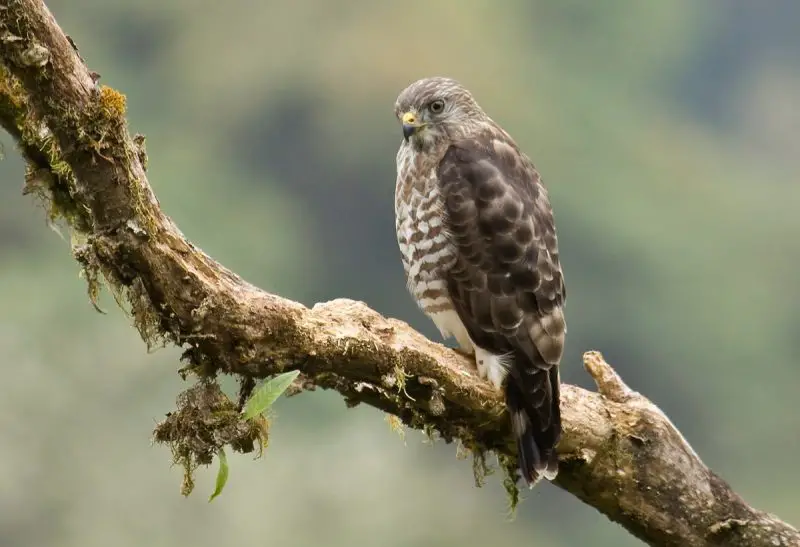
The Broad-winged Hawk is a compact and stocky raptor, smaller than many other hawks found in Kansas. It features broad wings and a short, square tail with distinctive black and white bands. Adults are typically brown above and lighter below, with a noticeable dark edge along the trailing wing when viewed in flight.
This species measures between 13 to 17 inches in length with a wingspan of about 32 to 40 inches. Broad-winged Hawks are forest dwellers that prefer dense woodlands near rivers or lakes. They perch quietly in shaded areas and ambush prey such as frogs, small mammals, insects, and birds. Their short, broad wings allow them to maneuver skillfully through forested environments.
In Kansas, Broad-winged Hawks are primarily seen during spring and fall migration. They breed mostly in the eastern part of the state, where wooded areas are more abundant. During migration, they form large flocks, soaring on thermal currents that carry them effortlessly across great distances toward their wintering grounds in Central and South America.
The Broad-winged Hawk’s piercing whistle, a high-pitched “peet,” is often heard in forested habitats. They build their nests high in trees, often using old squirrel nests as a foundation. Both parents participate in raising their young, feeding them a steady diet of small vertebrates until they fledge.
Rough-legged Hawk (Buteo lagopus)
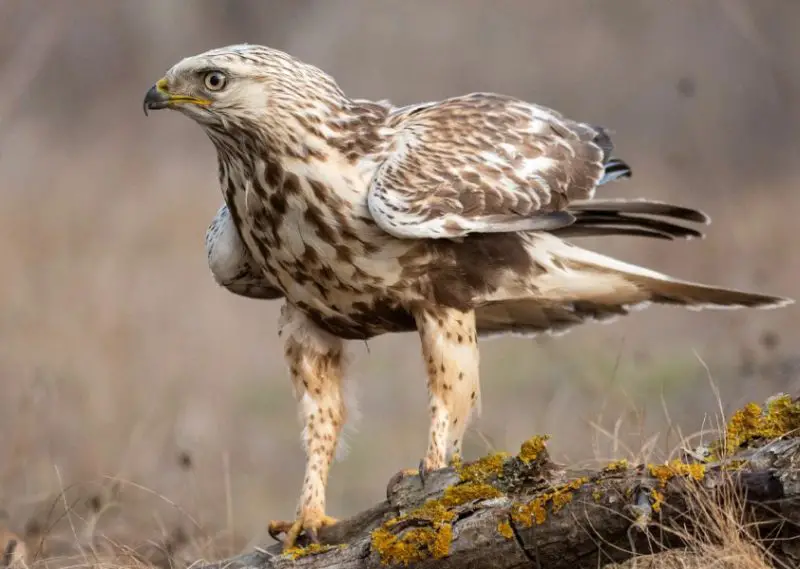
The Rough-legged Hawk is a majestic winter visitor to Kansas, traveling from the Arctic tundra where it breeds. It gets its name from the feathering that extends all the way down its legs — a unique adaptation that helps it stay warm in frigid environments. Adults can appear in either light or dark morphs, with light morphs displaying pale underparts and dark belly patches, while dark morphs are mostly chocolate brown.
These hawks measure between 18 to 24 inches long with an impressive wingspan that can reach 60 inches. They are built for hovering flight, with long, narrow wings and a slightly smaller head compared to other buteos. Their primary diet consists of small mammals, especially voles and mice, which they hunt in open fields and grasslands.
In Kansas, Rough-legged Hawks are typically seen during the colder months, especially in the northern and central regions. They prefer open terrain such as prairies, farmlands, and marshes where prey is abundant. You may spot them perched on fence posts or utility poles, scanning for movement below.
Unlike many hawks, Rough-legged Hawks rarely hunt from the air for long distances. Instead, they use their exceptional hovering ability to stay suspended over one spot while searching for prey. When spring arrives, they return to their Arctic breeding grounds, nesting on cliffs and rocky outcrops.
Ferruginous Hawk (Buteo regalis)
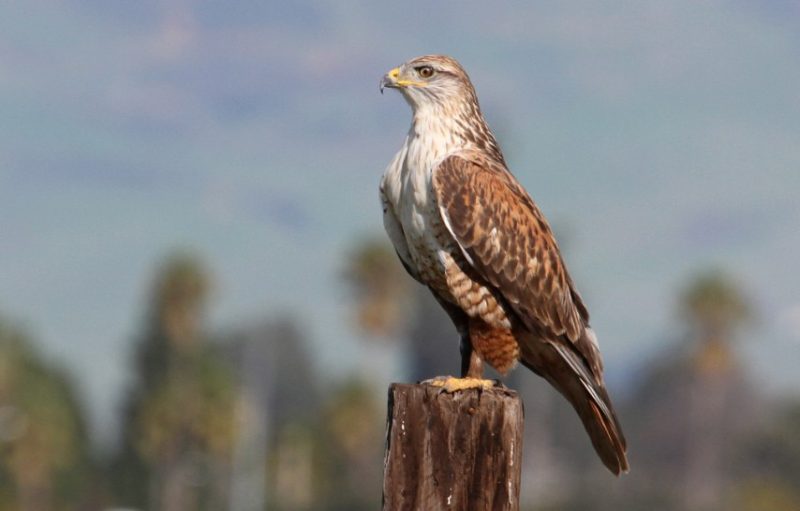
The Ferruginous Hawk is the largest hawk species in North America and a magnificent sight across the open landscapes of western Kansas. Named for its rust-colored (ferruginous) plumage, this powerful bird has a white underside with reddish shoulders and legs, giving it a regal appearance. Light and dark morphs exist, but the pale form is most common in Kansas.
Measuring between 22 and 27 inches long with a wingspan up to 60 inches, the Ferruginous Hawk is built for wide-open spaces. Its long wings and broad chest make it a strong flier capable of gliding low over prairies in search of prey. It mainly feeds on ground-dwelling mammals such as prairie dogs, rabbits, and gophers, often hunting in pairs or small groups.
In Kansas, Ferruginous Hawks are most frequently found in the western plains and grasslands where open space is plentiful. They prefer nesting on low cliffs, hillsides, or even on the ground, using sticks and grasses to construct large nests. Their nests are often reused for several years and expanded each season.
These hawks are relatively calm around humans compared to other species and are sometimes seen perched on fence posts along rural roads. Despite their strength and beauty, Ferruginous Hawks face threats from habitat loss and declining prey populations. Conservation efforts in Kansas help maintain stable numbers of this majestic raptor.
Red-shouldered Hawk (Buteo lineatus)
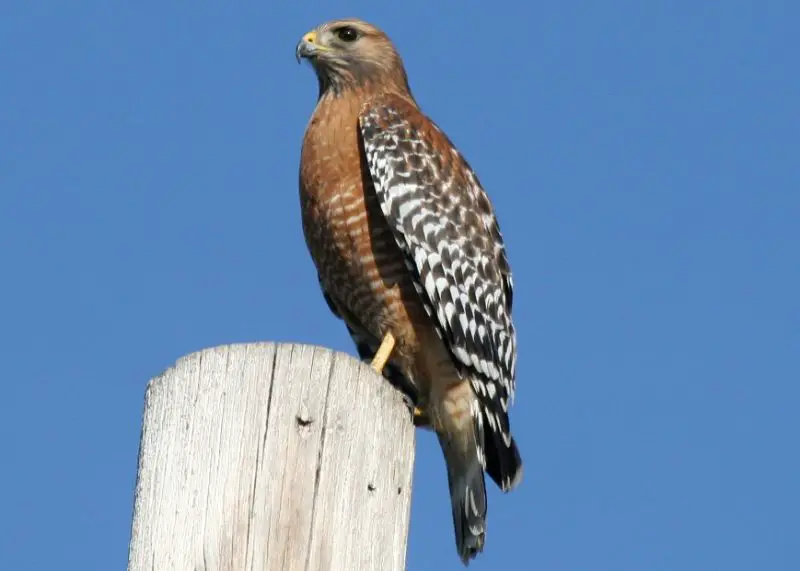
The Red-shouldered Hawk is a medium-sized raptor recognized by its striking plumage and distinct call. Adults have reddish-orange barring across the chest, dark brown upperparts, and bold black-and-white checkered wings. Their tail is black with several narrow white bands, and their shoulders display the characteristic rusty-red patches that give the species its name. In flight, they show translucent crescents near the wingtips that make them easy to identify.
Measuring around 17 to 24 inches long with a wingspan of up to 43 inches, the Red-shouldered Hawk is slightly smaller than the Red-tailed Hawk. It primarily hunts small mammals, amphibians, reptiles, and occasionally birds. Unlike many open-country hawks, it prefers wooded areas, where it can glide through trees with agility. Its call — a loud, repeated “kee-aah” — is one of the most recognizable sounds in forested habitats.
In Kansas, this species is found mainly in the eastern regions, especially near rivers, wetlands, and mixed forests. It relies on mature woodlands for nesting and often chooses sites near water. The presence of open understory and nearby fields provides ideal hunting grounds.
Red-shouldered Hawks are known for their territorial nature. Mated pairs often return to the same nesting area year after year, fiercely defending it from intruders. Their adaptability to suburban woodlots and river corridors has helped them remain stable, even as forest habitats have diminished in some areas.
Northern Harrier (Circus hudsonius)
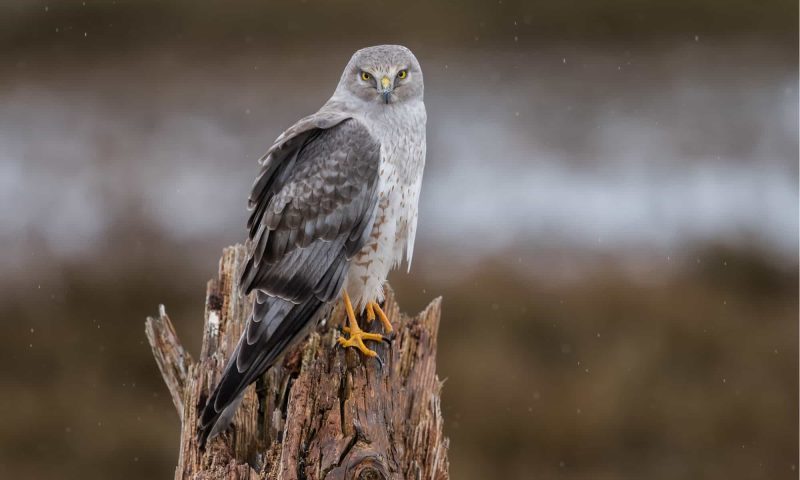
The Northern Harrier is a unique and elegant raptor easily recognized by its owl-like facial disk and low, graceful flight over open fields. Males are gray above and white below with black wingtips, while females are brown with streaked underparts. Both sexes have a distinctive white rump patch that is visible in flight — one of the key features for identification.
This slender hawk measures between 18 and 20 inches long, with a wingspan of about 43 to 48 inches. Unlike most hawks, Northern Harriers rely heavily on their hearing as well as sight to locate prey. They fly close to the ground, gliding smoothly as they listen for small rodents, birds, or frogs hidden in the grass. Their flight pattern is buoyant and owl-like, making them fascinating to watch.
Northern Harriers are found across Kansas year-round, though more common during migration and winter months. They prefer open habitats such as prairies, wetlands, and agricultural fields, where they can hunt with ease. They nest on the ground, often in thick grass or reeds near marshy areas.
These hawks are known for their stealthy and methodical hunting style. Their facial disk amplifies sounds, allowing them to detect movement in dense vegetation. Because of their ground-nesting habits, they are vulnerable to habitat loss and disturbance, but conservation of prairie and wetland areas in Kansas continues to support healthy populations.
Cooper’s Hawk (Accipiter cooperii)
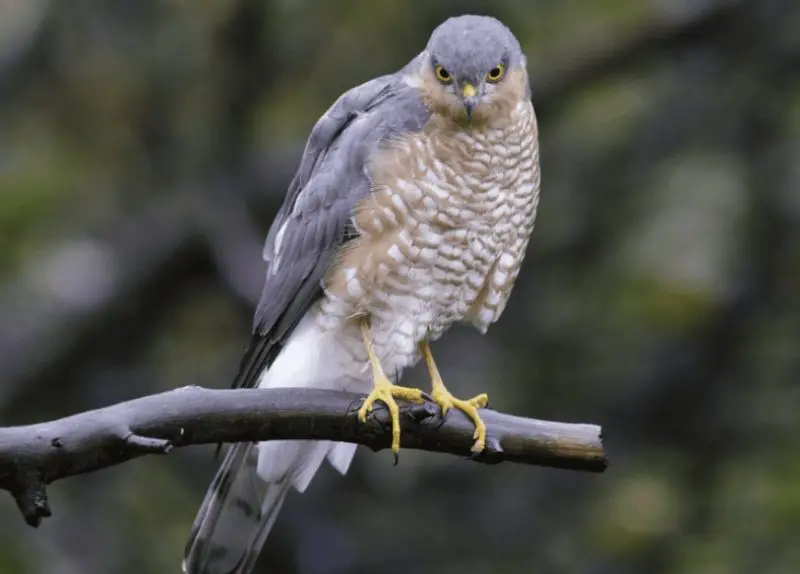
The Cooper’s Hawk is a sleek, medium-sized bird of prey known for its agility and precision in flight. Adults have bluish-gray upperparts, reddish barring on the chest, and a long, rounded tail with dark bands. Their piercing red eyes and narrow head give them a fierce expression, while juveniles appear brown and streaked with yellow eyes.
Typically measuring 14 to 20 inches in length with a wingspan of up to 36 inches, Cooper’s Hawks are built for speed and maneuverability. They are skilled hunters, often darting through trees to catch smaller birds in midair. Their diet mainly consists of pigeons, doves, and songbirds, but they occasionally take small mammals and reptiles.
In Kansas, Cooper’s Hawks inhabit both rural and urban areas, adapting well to wooded neighborhoods and parks. They prefer mixed forests and shelterbelts for nesting, often using old crow or squirrel nests as a base. Their adaptability has allowed their population to increase steadily across the state.
Cooper’s Hawks are known for their stealthy ambush techniques. They rely on surprise, bursting from cover to capture prey. During breeding season, pairs perform aerial displays and construct sturdy stick nests high in trees. Their resilience and ability to thrive near human settlements make them one of the most frequently seen accipiters in Kansas.
Sharp-shinned Hawk (Accipiter striatus)
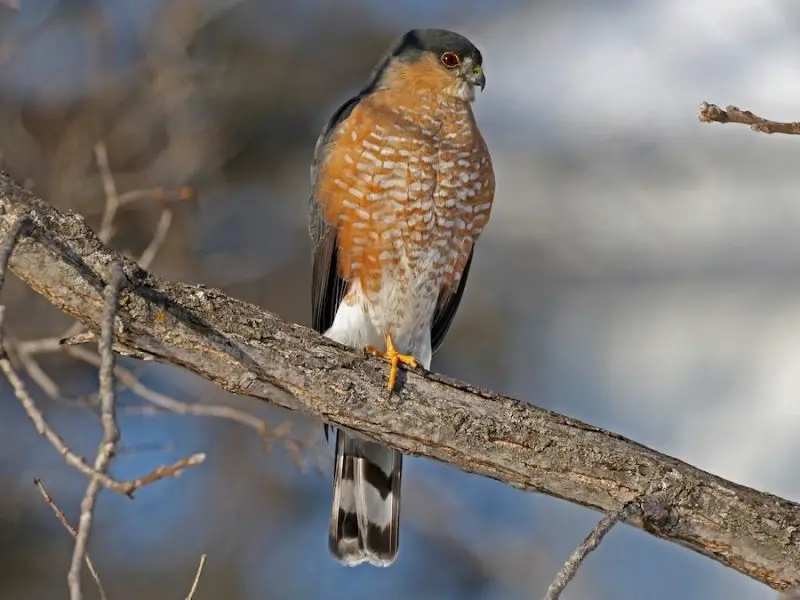
The Sharp-shinned Hawk is the smallest hawk species in Kansas, known for its quick movements and energetic hunting style. Adults have blue-gray upperparts, orange-barred chests, and square-tipped tails with dark bands. Juveniles are brown and heavily streaked below, resembling a smaller version of the Cooper’s Hawk but with a more compact body and smaller head.
This diminutive raptor measures 9 to 13 inches in length, with a wingspan ranging from 17 to 22 inches. Sharp-shinned Hawks are agile fliers, designed for weaving through dense forest canopies. They prey primarily on small songbirds, attacking suddenly from concealed perches. Their hunting behavior is fast, fierce, and highly efficient.
In Kansas, Sharp-shinned Hawks are mostly seen during migration and winter months. They prefer forest edges, wooded river corridors, and backyard feeders, where small birds gather. Their secretive nature makes them less noticeable, but their quick dashes and agile turns are unmistakable once spotted.
These hawks often migrate in groups, following mountain ridges and thermal currents. They nest in dense conifer stands farther north, rarely breeding in Kansas. During winter, they can sometimes be seen in suburban areas, especially near bird feeders, making them a surprise visitor for many backyard birdwatchers.
Northern Goshawk (Accipiter gentilis)
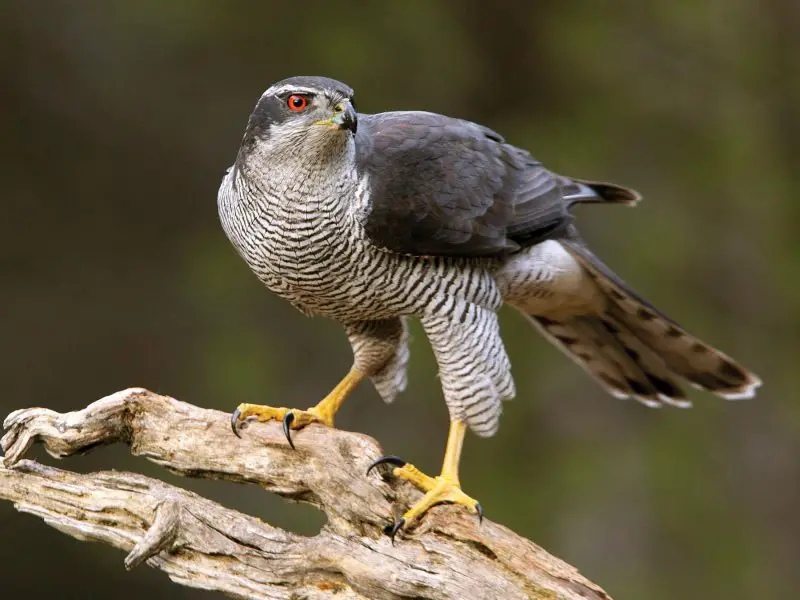
The Northern Goshawk is the largest and most powerful accipiter found in North America. It has broad wings, a long tail, and fierce red or orange eyes. Adults display bluish-gray upperparts and finely barred gray underparts, while juveniles are brown with heavy streaking. Its bold white eyebrow stripe gives it an intense, intimidating look.
These formidable hawks measure 20 to 26 inches long with a wingspan of up to 46 inches. They are strong, fast, and fearless hunters, capable of taking down large prey such as rabbits, grouse, and crows. Northern Goshawks often hunt by surprise, weaving rapidly through dense forests and striking with great force.
In Kansas, Northern Goshawks are rare winter visitors, typically appearing in heavily forested regions of the northeast. They favor mature woodlands with tall trees and dense cover, avoiding open areas. Because they are secretive and prefer remote habitats, sightings are infrequent and often short-lived.
Despite their rarity, goshawks hold a mythical reputation among birders for their fierce demeanor and beauty. They are highly territorial during breeding season and will aggressively defend their nests from any intruder, including humans. Their presence in Kansas marks a special event for raptor enthusiasts lucky enough to witness one.
Harris’s Hawk (Parabuteo unicinctus) (rare visitor)
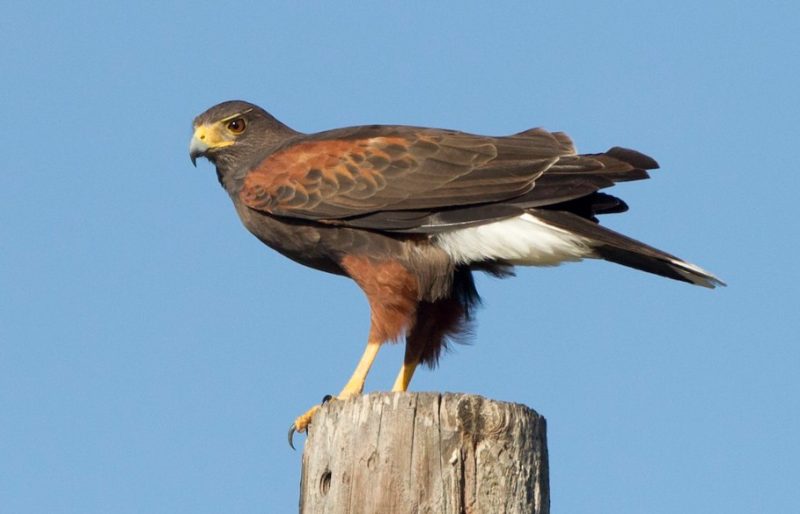
The Harris’s Hawk is a striking and social raptor known for its cooperative hunting behavior — a rarity among birds of prey. It features dark brown plumage accented with chestnut shoulders, thighs, and wing linings. Its long legs, white-tipped tail, and bright yellow cere and legs make it easy to recognize. This species is most common in the arid regions of the southwestern United States.
Measuring between 18 and 23 inches long with a wingspan of up to 47 inches, the Harris’s Hawk is both powerful and graceful. It preys on small mammals, birds, and reptiles, often hunting in coordinated groups of two to six individuals. This teamwork allows them to flush prey from cover and share the catch — a behavior rarely seen among raptors.
In Kansas, Harris’s Hawks are considered rare visitors, occasionally appearing in the southern or southwestern parts of the state. They prefer desert scrublands, open grasslands, and mesquite habitats, though they may wander northward during winter or dispersal periods. Their adaptability to arid and semi-open landscapes makes them more likely to appear after mild winters.
The social structure of Harris’s Hawks is one of their most fascinating traits. They live in extended family groups led by a dominant female, with younger hawks assisting in hunting and raising chicks. Their cooperative nature, intelligence, and tolerance for humans have also made them popular in falconry. Spotting one in Kansas is a special experience for any bird enthusiast.
Tips for Watching Hawks in Kansas
Observing hawks in Kansas is a rewarding experience for birdwatchers, as the state’s mix of prairies, woodlands, and farmlands provides excellent habitats for these raptors. The best time to watch hawks is early morning or late afternoon when they are most active. Look for them soaring high above open fields or perched on telephone poles and fence posts scanning for prey. Using binoculars or a spotting scope can help you identify subtle plumage patterns and tail markings that distinguish each species.
To attract hawks to your area, create an environment that supports their prey species. Maintaining open fields, native grasslands, and brushy edges can invite rodents, which in turn attract hunting hawks. Avoid using pesticides, as they reduce prey availability and can harm raptors through the food chain. Setting up perching spots such as tall posts or dead tree limbs also encourages hawks to visit or hunt nearby.
When watching hawks, practice respectful observation. Keep a safe distance, especially during nesting season when hawks can become territorial. Avoid disturbing their nests or chicks. Use natural cover and move slowly to prevent scaring them away. Photographing hawks is easiest when they are perched or soaring at lower altitudes, often during migration or in the early morning light when thermals have not yet formed.
For those interested in hawk migration, visit areas such as Cheyenne Bottoms or Quivira National Wildlife Refuge, where large numbers of hawks pass through each spring and fall. These locations offer ideal conditions for viewing species like Swainson’s Hawks, Broad-winged Hawks, and Northern Harriers in large numbers. Patience and good timing are key to witnessing Kansas’s incredible raptor displays.
FAQs About Hawks in Kansas
What is the most common hawk in Kansas?
The Red-tailed Hawk is the most common hawk across Kansas and can be seen year-round. It often perches along highways or glides in wide circles over open fields, making it one of the easiest raptors to identify.
When is the best time to see hawks in Kansas?
Hawks are visible throughout the year, but spring and fall migration periods bring the highest diversity. Species like Broad-winged Hawks and Swainson’s Hawks pass through in large numbers during these seasons, especially over open grasslands and wetland areas.
Do hawks migrate through Kansas?
Yes. Many hawks, including Swainson’s and Broad-winged Hawks, migrate through Kansas on their way between North and South America. During migration, they often gather in large groups known as “kettles,” using thermal currents to conserve energy while flying long distances.
Are hawks dangerous to pets or humans?
Hawks rarely pose a threat to humans and usually avoid confrontation. Small pets, especially those under five pounds, can occasionally be at risk from large hawks like the Red-tailed or Ferruginous Hawk. Supervise small pets outdoors if hawks are common in your area.
Where can I see hawks in Kansas?
Prime hawk-watching spots include Cheyenne Bottoms Wildlife Area, Quivira National Wildlife Refuge, and the Flint Hills region. Open farmland, grasslands, and woodland edges also provide excellent opportunities to observe both resident and migrating species.
What do hawks eat in Kansas?
Their diet depends on the species and habitat. Most hawks feed on small mammals like mice, voles, and rabbits. Others, such as the Northern Harrier, may hunt birds, frogs, and insects. During migration, Swainson’s Hawks are known to feed heavily on grasshoppers and crickets.
Do hawks nest in Kansas?
Yes, several hawk species breed in Kansas. Red-tailed, Red-shouldered, and Cooper’s Hawks commonly nest in tall trees, while Ferruginous Hawks often nest on cliffs or directly on the ground in open country. Pairs usually return to the same nesting sites year after year.
Are hawks protected in Kansas?
All native hawks are protected under the Migratory Bird Treaty Act. It is illegal to harm, capture, or possess hawks or their eggs without a special permit. Observers should admire them from a distance and avoid interfering with their natural behaviors.
How can I tell a hawk from an eagle or falcon?
Hawks are generally smaller than eagles but larger than falcons. They have broader wings and shorter tails, designed for soaring rather than high-speed dives. Falcons, like the Peregrine Falcon, have pointed wings and faster, more agile flight patterns, while eagles appear bulkier with longer wingspans.
What’s the rarest hawk seen in Kansas?
The Harris’s Hawk is one of the rarest visitors to Kansas, occasionally appearing in the southern parts of the state. Its social behavior and cooperative hunting style make it a remarkable find for birdwatchers lucky enough to spot one.

